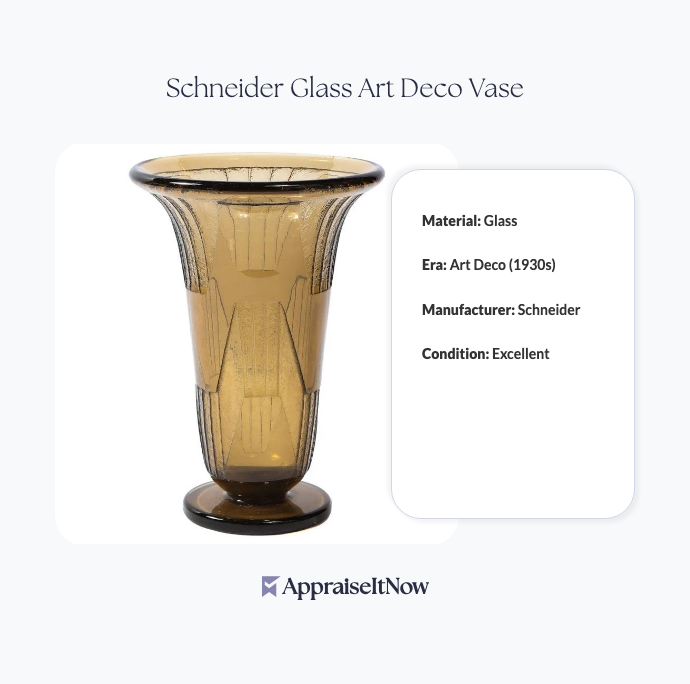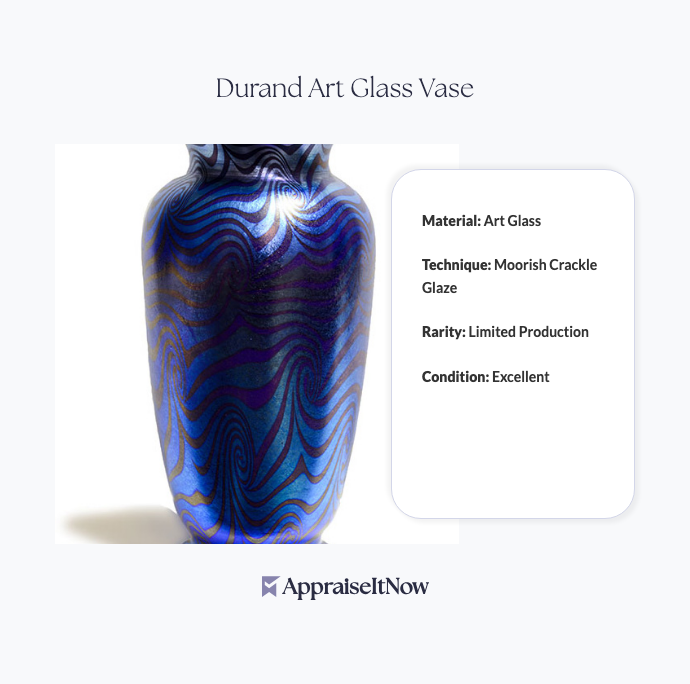<h1>How to Get Your Tiffany Studios Dragonfly Lamp 22 Inch Appraised</h1>
<p>The Tiffany Studios Dragonfly Lamp 22 Inch stands as one of the most coveted pieces in the decorative arts market, commanding valuations between <strong>$30,000 and $40,000</strong> for quality examples. Whether you've inherited a family heirloom, discovered a potential treasure, or are considering purchasing one, understanding how to properly appraise this iconic stained glass creation is essential for making informed decisions about ownership, sale, or insurance.</p>
<h2>Understanding Your Tiffany Studios Dragonfly Lamp's Value</h2>
<p>Your 22-inch dragonfly lamp represents far more than functional lighting—it's a masterpiece of early 20th-century craftsmanship. Created during the height of the Arts and Crafts movement when Tiffany Studios dominated the decorative arts landscape, this lamp embodies the revolutionary copper foil technique that Louis Comfort Tiffany perfected and patented. The <strong>vibrant stained glass design</strong> featuring dragonfly motifs became signature Tiffany, so recognizable that the name itself became synonymous with the style.</p>
<p>What makes your lamp valuable? The combination of limited worldwide production, meticulous hand-selection of glass pieces, and the iconic Tiffany Studios branding creates strong collector demand. Every 22-inch dragonfly lamp tells a unique story through its glass coloration and internal consistency, making each example distinct even when produced in the same era.</p>
<div class="callout tip"><p><strong>Valuation Insight</strong></p>
<p>Tiffany Studios lamps first introduced in the 1900s typically command the highest valuations, particularly when original signatures and production documentation remain intact.</p></div>
<h2>Why Dragonfly Design Commands Premium Pricing</h2>
<p>The dragonfly motif holds special significance in Tiffany's catalog. Unlike generic floral patterns, the dragonfly represented nature's grace combined with technical complexity—requiring precise cutting and arrangement of individual glass pieces to capture the creature's iridescent wings and delicate form. This design challenge separated masterworks from lesser productions, and collectors recognize this distinction immediately.</p>
<p>Understanding why dragonflies appear so frequently in decorative arts reveals the design's commercial and artistic success. The motif appeals across aesthetic preferences, from Victorian to Arts and Crafts enthusiasts, maintaining steady demand across changing design trends. This broad appeal helps support the valuation range you'll encounter during appraisal conversations.</p>
<h2>Key Factors That Appraisers Evaluate</h2>
<p>Professional appraisers of <a href="/types/antique-artwork">antique artwork</a> and decorative <a href="/types/antique-furniture">antique furniture</a> examine several critical elements when determining your lamp's specific value within the $30,000-$40,000 range.</p>
<p><strong>Authenticity verification</strong> comes first. Genuine Tiffany Studios dragonfly lamps bear specific signatures and construction markers that distinguish them from reproductions or later-period pieces. The base design, solder patterns, and glass texture tell experienced eyes whether you're holding an authentic early-1900s creation or a skilled contemporary imitation. Many valuable pieces include original Tiffany Studios branding on both the shade and base.</p>
<p><strong>Condition assessment</strong> significantly impacts appraisal outcomes. Collectors distinguish between pieces with original patina versus those showing restoration. Original glass pieces without replacement, original solder work without re-soldering, and intact copper foil framework command premium valuations. However, professionally executed conservation work addressing broken pieces or age-related deterioration may not substantially reduce value if documentation of the work exists.</p>
<p><strong>Completeness of the lamp assembly</strong> matters tremendously. Original matching shade and base components increase value substantially. When shade and base originated from different sources or represent different production periods, appraisers adjust valuations accordingly. Documentation proving the shade and base matched originally can elevate your lamp's worth by 15-25% compared to assembled examples.</p>
<table class='appraisal-table'>
<thead>
<tr>
<th>Evaluation Factor</th>
<th>Impact on Value</th>
<th>Details</th>
</tr>
</thead>
<tbody>
<tr>
<td>Original signature/markings</td>
<td>+20-30%</td>
<td>Authentic Tiffany Studios branding</td>
</tr>
<tr>
<td>Condition of glass</td>
<td>+/-20-40%</td>
<td>No replacements vs. minor repairs</td>
</tr>
<tr>
<td>Matching shade and base</td>
<td>+15-25%</td>
<td>Original assembly vs. later combinations</td>
</tr>
<tr>
<td>Documented provenance</td>
<td>+10-20%</td>
<td>Known ownership history, exhibition records</td>
</tr>
</tbody>
</table>
<h2>The Role of Professional Appraisal Services</h2>
<p>Determining how much you can get for your Tiffany lamp requires more than online price guides. Professional appraisers provide detailed market analysis comparing your specific example against recent sales of comparable pieces. This process, essential for <a href="/types/personal-property">personal property</a> valuation, ensures accuracy that protects your interests whether buying, selling, or maintaining insurance coverage.</p>
<p>When seeking appraisal services, look for specialists experienced in <a href="/types/memorabilia-and-collectibles">memorabilia and collectibles</a>, particularly those with documented expertise in decorative arts and stained glass. <strong>AppraiseItNow</strong> connects you with <strong>credentialed experts</strong> holding designations from recognized appraisal societies including AAA, ISA, ASA, CAGA, and AMEA. These professionals understand the nuanced differences that distinguish a $25,000 lamp from a $40,000 specimen.</p>
<p>The appraisal process typically involves detailed photographic documentation, condition assessment, research into comparable market sales, and a comprehensive written report suitable for insurance companies or legal proceedings. Your appraiser will establish the lamp's fair market value—what a willing buyer would pay a willing seller in the current market environment—rather than replacement cost or wishful estimates.</p>
<div class="callout note"><p><strong>Professional Advantage</strong></p>
<p>Certified appraisals provide documentation accepted by insurance carriers, courts, and financial institutions, protecting your interests across legal and financial transactions.</p></div>
<h2>How to Find Qualified Appraisers for Your Dragonfly Lamp</h2>
<p>Asking how do I find out what my Tiffany lamp is worth starts with identifying qualified professionals. Not all appraisers possess expertise in decorative arts or stained glass valuation. Look for practitioners who specialize in <a href="/blog/appraising-fine-art-a-comprehensive-guide-for-art-collectors-and-investors">fine art appraisals</a> and have documented experience with Tiffany Studios pieces.</p>
<p>Credentials matter significantly. Appraisers holding designations from the <strong>Appraisers Association of America (AAA)</strong>, <strong>International Society of Appraisers (ISA)</strong>, <strong>American Society of Appraisers (ASA)</strong>, or similar organizations follow standardized protocols and ethical guidelines. These professionals maintain insurance, participate in continuing education, and submit to peer review—protections unavailable from self-proclaimed "experts."</p>
<p>Ask potential appraisers about their specific experience with Tiffany Studios lamps and early-20th-century decorative arts. Request references from previous clients or examples of their work. Qualified professionals willingly discuss their methodology, qualifications, and fee structure before beginning work. Avoid appraisers who estimate values based solely on photographs or provide quick verbal estimates without thorough examination.</p>
<h2>Identifying Valuable Versus Standard Tiffany Lamps</h2>
<p>The question "what is the most valuable Tiffany lamp" requires understanding production variations across Tiffany's prolific output. The company produced thousands of lamp designs between the 1890s and 1930s, ranging from modest $50 pieces to museum-quality works commanding six-figure sums. Your 22-inch dragonfly lamp occupies the premium tier due to the design's complexity and the size's impressive scale.</p>
<p>Understanding the difference between a Tiffany lamp and a Tiffany style lamp proves crucial for appraisal accuracy. Genuine Tiffany Studios pieces bear specific construction markers—hand-selected and individually cut glass pieces joined with copper foil, soldered with distinctive patterns, and mounted on bronze or brass bases. Modern Tiffany-style reproductions, while beautiful, employ different manufacturing techniques (molded glass, printed patterns, aluminum components) that appraisers immediately identify, resulting in valuations typically under $1,000.</p>
<p>Whether your lamp increases in value depends on multiple factors. Quality examples in excellent condition with documented provenance appreciate steadily, particularly as earlier pieces become scarcer. However, heavily damaged lamps requiring substantial restoration may stagnate or decline in value if repair costs approach the piece's market worth. Professional appraisers assess whether your specific lamp represents a sound investment holding or an acquisition focused on personal enjoyment.</p>
<h2>Preparing Your Lamp for Appraisal</h2>
<p>Before scheduling your appraisal appointment, gather any documentation about your lamp's history. Auction catalogs, previous appraisals, photographs showing condition over time, and ownership records all strengthen the appraiser's ability to establish provenance and make informed value determinations. Even family stories about the lamp's acquisition or display contribute valuable context.</p>
<p>Photograph your dragonfly lamp thoroughly from multiple angles, particularly clear views of any signatures, markings, or wear patterns. These images help appraisers conduct preliminary research and identify specific production variations before in-person examination. High-quality documentation also protects against loss or damage by creating a permanent record of your piece's condition.</p>
<p>Handle your lamp minimally before appraisal. Original dust, patina, and wear patterns tell important stories to experienced eyes. Cleaning or restoration attempted by well-meaning owners sometimes damages value more than the original condition would have. Let your appraiser see your lamp exactly as it currently exists, with any repairs or modifications disclosed openly.</p>
<div class="callout tip"><p><strong>Preparation Strategy</strong></p>
<p>Compile all historical documentation, previous appraisals, and ownership records to support accurate valuation and strengthen your lamp's provenance documentation.</p></div>
<h2>Understanding Appraisal Purpose and Scope</h2>
<p>Different appraisal purposes require different approaches. An insurance appraisal establishes replacement cost to protect against loss or damage. An estate appraisal determines fair market value for tax and distribution purposes. A pre-sale appraisal helps establish asking prices for auction or private sale. A divorce or litigation appraisal satisfies legal requirements for asset division. Discuss your specific purpose with potential appraisers, as this affects their methodology and final valuations.</p>
<p>Insurance appraisals typically use replacement cost—what you'd pay to acquire an equivalent lamp in today's market—which may exceed fair market value. Estate appraisals generally establish fair market value for probate purposes. Auction house appraisals focus on realistic estimates reflecting market demand and auction house fees. Ensure your appraiser understands which valuation standard applies to your situation.</p>
<h2>Why Professional Appraisals Matter for Tiffany Pieces</h2>
<p>The decorative arts market demands documentation. Auction houses won't accept Tiffany Studios pieces without appraisal support. Insurance companies require certified valuations exceeding specific thresholds. Estate settlements demand independent appraisals. Legal proceedings necessitate expert testimony backed by professional credentials. These practical requirements make professional appraisal services not optional but essential for serious collectors.</p>
<p>Your appraiser provides more than a value estimate—they supply documented expertise that protects your interests across transactions and circumstances. When asking how can I tell if my lamp is valuable, the honest answer involves professional assessment by qualified experts who understand market dynamics, construction techniques, and authentication markers that separate exceptional pieces from standard examples.</p>
<p>For detailed guidance on how to get an accurate appraisal for your treasured Tiffany dragonfly lamp, our resources on <a href="/blog/appraising-fine-glass-and-crystal-valuing-delicate-glassware-and-artistic-creations">appraising fine glass and crystal</a> and <a href="/blog/appraising-antiques-unveiling-the-hidden-treasures-in-your-collection">appraising antiques</a> offer comprehensive information about the professional appraisal process.</p>
<div class="callout note"><p><strong>Key Takeaway</strong></p>
<p>Your Tiffany Studios Dragonfly Lamp 22 Inch represents a significant asset worthy of professional appraisal. Certified valuation protects your investment through accurate documentation, market analysis, and expert assessment that stands up to insurance, legal, and financial scrutiny. Connect with qualified appraisers today to understand your lamp's true worth and secure appropriate protection for this remarkable piece of decorative arts history.</p></div>







.avif)







